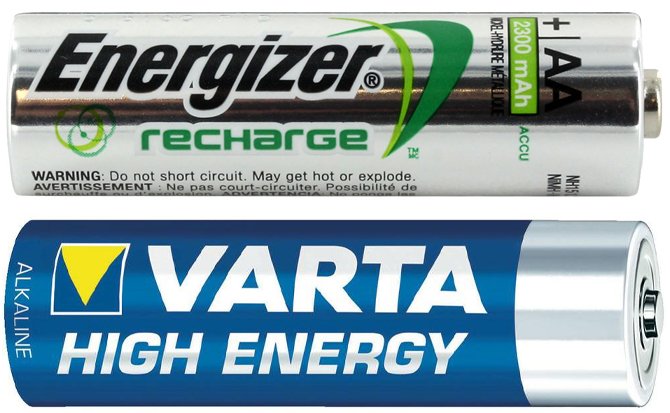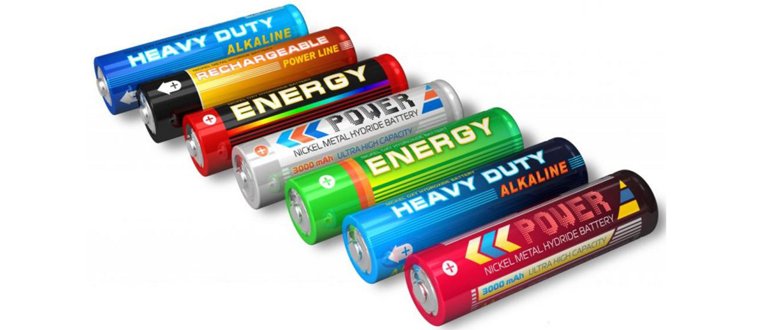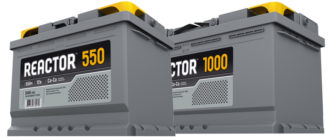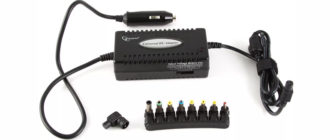Currently, a very large number of different power sources for portable devices are on sale, one of which is disposable (primary), and the other is reusable, rechargeable batteries (secondary current sources). In this variety, it is sometimes difficult to understand which element is a battery that cannot be recharged, and which is a battery.
This article discusses the characteristic features of galvanic batteries to distinguish disposable products from reusable batteries. These include inscriptions on the case, voltage and capacitance values, size, and marking.
According to the inscriptions on the case
When studying a power source, first of all, you need to pay attention to what inscriptions the manufacturer put on his case. As a rule, they are enough to determine which class of products the studied power source belongs to.

The following inscriptions indicate accessory to the batteries:
- Rechargeable - rechargeable battery;
- Chargement rapide / normale or Quick / normal charge (with current and time values) - fast / normal charge;
- Nickel-Cadmium, Ni-Cd - nickel-cadmium;
- Nickel-Metel hydrid, Ni-Mh - nickel metal hydride;
- Lithium-ion, Li-ion - lithium-ion;
- Polymer-based - polymer;
- mAh is the capacity in mAh, for batteries this parameter on the case, as a rule, is not indicated, although some, for example, lithium, may have this designation.
The following inscriptions indicate battery accessory:
- Do not recharge - do not recharge;
- Alkaline battery, Zinc Manganese Oxide battery - alkaline battery;
- Dry, Zinc Chloride, Leclanche, Zinc – Carbon battery - salt;
- Lithium battery - lithium;
- Zinc – air battery - air-zinc;
- Silver Oxide - with silver oxide.
Some little-known manufacturers produce special rechargeable alkaline batteries, which can be distinguished from batteries by the presence of the inscription Rechargeable Alkaline battery.

By voltage and capacitance
Disposable and reusable power supplies differ in voltage and capacitance that they give out, about which manufacturers make the corresponding designations on the case:
- 1,2v or 3,7v - rechargeable batteries;
- 1.5 v, 1.55, as well as 3.0v - batteries;
- 3.6v voltage have lithium thionyl chloride batteries.
In the presence of a voltmeter, the electromotive force of the new elements can be measured. If the voltage of a standard cell exceeds 1.2 volts and is equal to 1.5-1.6v (for alkaline and salt products), 3 or 3.6 volts (for lithium cells) are batteries. If the device shows a voltage of about 1.2 volts or 3.7 volts - this is the battery.
To distinguish a lithium-ion battery (3.7 volts) from a lithium battery (3.6 volts), which have a slight difference in nominal voltage, you need to study the inscriptions on their cases.

When measuring voltages on galvanic current sources, their self-discharge must be taken into account. In older instances of batteries, especially salt ones, the voltage can decrease significantly over time and become equal to a value that corresponds to batteries (1.2 volts) or even become lower. When you try to charge them, electrolyte leakage is almost guaranteed.
Assessing the remaining capacity in a battery can also help determine its affiliation.Batteries cannot be discharged to zero, they are able to work for a long time with a reduced voltage, for example, to provide a dim glow of a flashlight or slow rotation of an electric toothbrush.
The battery, as a rule, during a discharge will not be able to give the necessary energy even for the dim glow of a light bulb, an LED in a flashlight or a motor.
By size
All tablet batteries (of any size) are usually disposable.
Cylindrical lithium-ion batteries are usually available with standard sizes from 10180 to 75400, where the first two digits are the diameter in millimeters and the second two digits are their height in mm.
Non-standard size power supplies in most cases are batteries, but this should be confirmed by the presence of appropriate inscriptions on the case.

By marking
You can distinguish batteries from batteries according to the IEC marking that is applied to them, for example:
- R, CR, ER, LR, FR, PR, SR are batteries;
- HR, KR, ZR - batteries.
Each manufacturer has its own designation of its manufactured galvanic cells, which does not always coincide with the standard. If there is a name of the manufacturer, the remaining designations can be deciphered by studying the documentation on its website.
Important! If there is no certainty that the element under study is a battery, then it is better not to try to charge it until it is more accurately established, especially if it is a lithium power source that can explode.





